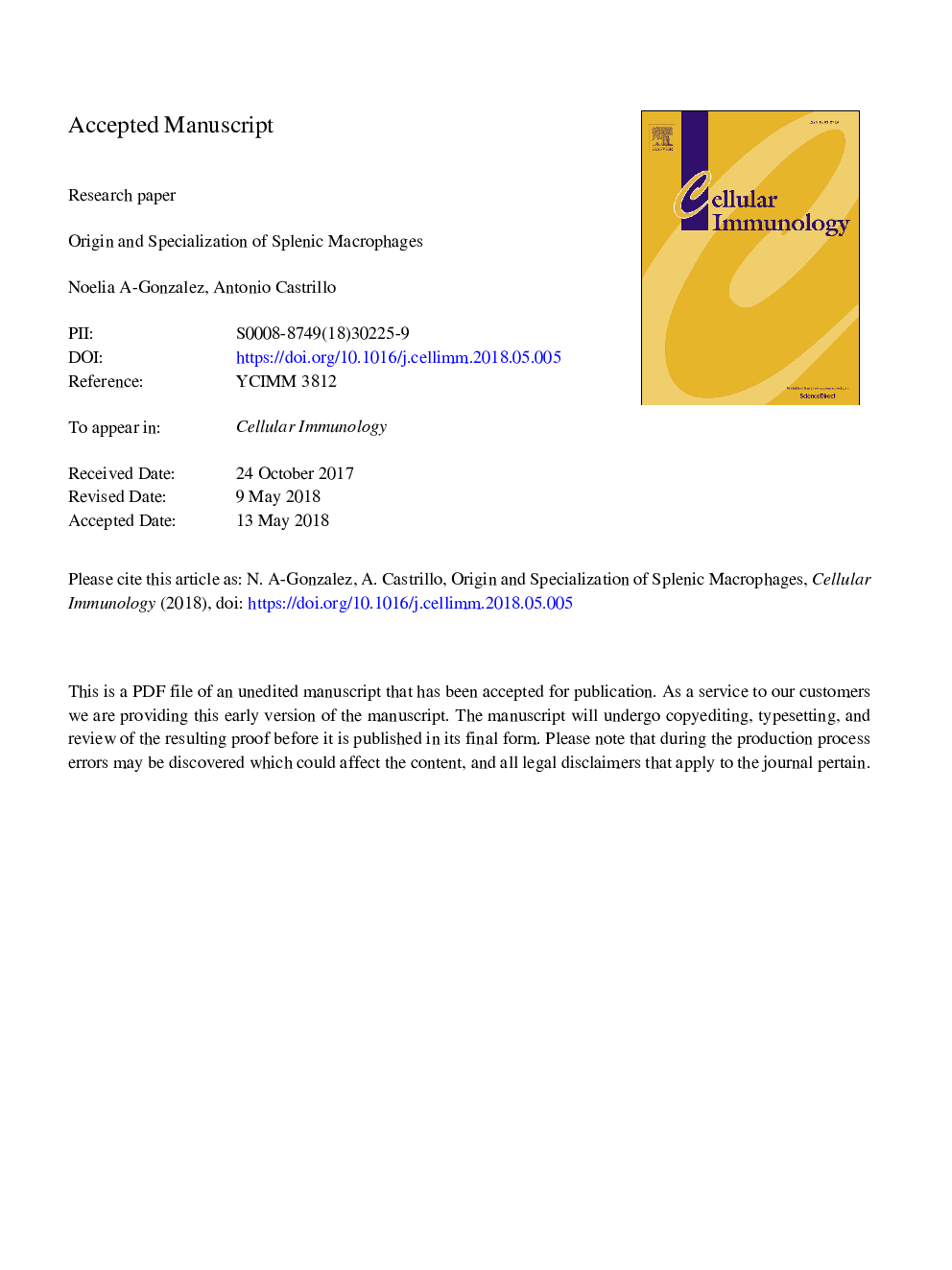| Article ID | Journal | Published Year | Pages | File Type |
|---|---|---|---|---|
| 8943871 | Cellular Immunology | 2018 | 27 Pages |
Abstract
Macrophage heterogeneity in the spleen has been long documented, with four subsets populating the different splenic compartments. The diverse environments on the splenic compartments determine their varied phenotype and functions. In the white pulp, highly phagocytic macrophages contribute to the generation of the immune response. The marginal zone contains two populations of macrophages, which also contribute to the immune response. Their strategic position in the bloodstream and their unique phenotype confer them a crucial role in the defense against blood borne pathogens, placing them at the crossroad between innate and adaptive immune responses. Macrophages in the red pulp are classically linked to homeostatic and metabolic functions in erythrocyte phagocytosis and iron recycling. We review here recent advances demonstrating the importance of macrophage ontogeny and organ development in determining the phenotype, transcriptional profile and, ultimately, the functions of the populations of splenic macrophages.
Related Topics
Life Sciences
Biochemistry, Genetics and Molecular Biology
Cell Biology
Authors
Noelia A-Gonzalez, Antonio Castrillo,
